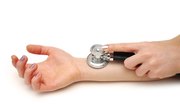According to the U.S. Bureau of Labor Statistics, the need for nurse aides is expected to increase as the elderly population continues to grow, and advances in technology allow people to live longer. To help in meeting this increased demand for nurse aides, schools and private businesses can learn how to start a nursing assistant program that prepares students to become nurse aides.
Secure funding. A nursing assistant program may qualify for grant funding to get started from their state or a private foundation. For example, the Fan Fox and Leslie R. Samuels Foundation in the past has provided grant funding to start and expand nurse aide training programs in New York City. For programs unable to find grants, private donations or loans may be used to cover expenses.
Find a facility. Classroom and clinical facilities are needed for a nursing assistant program. The classroom needs to be large enough to accommodate the size of the class, as well as allow students to complete labs. This entails having at least one hospital bed in the lab or classroom area to teach students how to make beds and move patients. The clinical site needs to occur at an actual medical facility with real patients. The coordinator or director of the nursing assistant program must enter into a contract with a facility to do clinicals, and this contract must be submitted with other documentation for a nurse aide program to be approved by the state.
Hire staff. Nursing assistant programs need a coordinator or director responsible for the daily operations and oversight of the program. Instructors are also needed to teach the curriculum in class and at clinicals for nurse aides in training. Some support staff may be necessary as well to process enrollments, answer the phone and assist faculty and the program coordinator. The coordinator and instructors are required to be registered nurses who have worked in long-term care facilities, and many states require them to complete a class on teaching and training nurse aides. To be approved by the state as a nurse aide program, submit the resumes for each instructor and the coordinator that details the places and dates of employment in the medical field.
Develop the curriculum. States have defined topics and tasks related to the nurse aide position that must be covered since students must take the state licensing or certification exam. The content and topics to be covered in a nurse aide curriculum need to be broken down into different units or sections. Programs must identify the order of the units, the topics taught under each unit and the amount of contact hours students receive while learning each specific unit. Nurse aide programs must meet the minimum number of hours required by their state, and the amount listed in the curriculum must match or exceed the minimum. For example, West Virginia requires 120 contact hours, so programs in the state must have 120 hours of instruction assigned to units in the curriculum.
Write policies and procedures. Any program that offers training as a nursing assistant needs to have policies and procedures. Some of these are mandated by the state while others are voluntarily created by the program. State-mandated policies include instructor-to-student ratio, pass/fail rate for the course, requirements to complete the course and the hours of operation for the program. When creating these required policies, programs need to adhere to the state laws and regulations. For example, nurse assistant programs in Louisiana have a maximum student-to-instructor ratio of 1:23 for classrooms and 1:10 for clincials, so all programs in Louisiana must have ratios of these sizes or smaller. Voluntary policies and procedures can be developed by the program, and topics may cover admission of students, refunds, class cancellation or emergency protocol.
Apply for accreditation. A nursing assistant program needs to be accredited or approved by the state since this allows students to become licensed or certified as a nurse aide in the state. Applying for accreditation entails completing a paper application and submitting supporting documents that prove the nurse assistant program meets the state's requirements. These documents may include resumes from the program coordinator and instructors, a copy of the curriculum, a facility agreement for clinicals and a copy of the policies and procedures of the program.
Purchase equipment. Audio-visual equipment is often needed to teach nurse aide classes as they allow instructors to provide notes, points of information or videos to students. Nurse assistants also need to practice the tasks they are learning, which can be done by creating a mock hospital room where one student acts as a patient while others practice common techniques such as moving and transferring.
Recruit students. After approval has been granted for the program, and all the equipment needed to teach class is available, nurse assistant programs can recruit students to enroll in the courses that are offered. General marketing can be beneficial to promoting the program, but networking with unemployment agencies, workforce training centers and health care facilities can provide solid referrals of students interested in becoming a nurse assistant.
Related Articles
References
Writer Bio
Allison Dodge has been a writer since 2005, specializing in education, careers, health and travel. She has worked at educational institutions for more than 10 years. Dodge has a master's degree in education administration.









